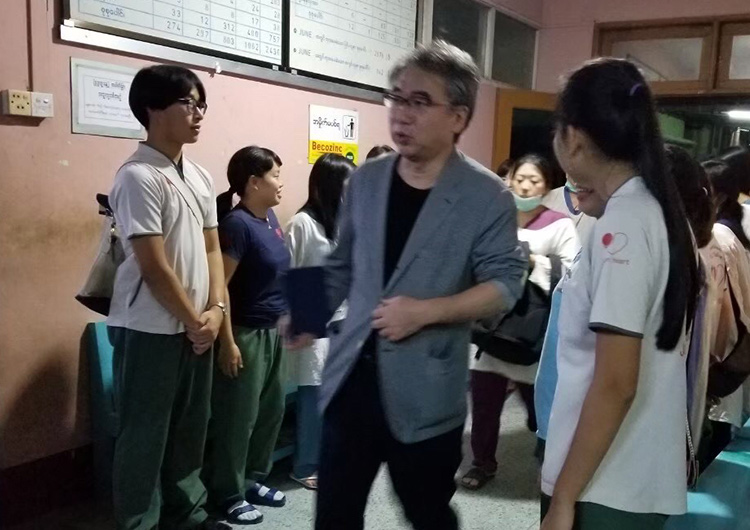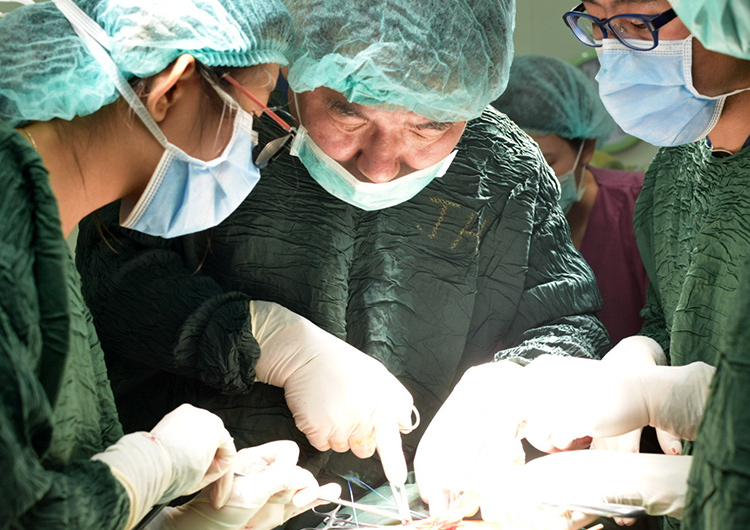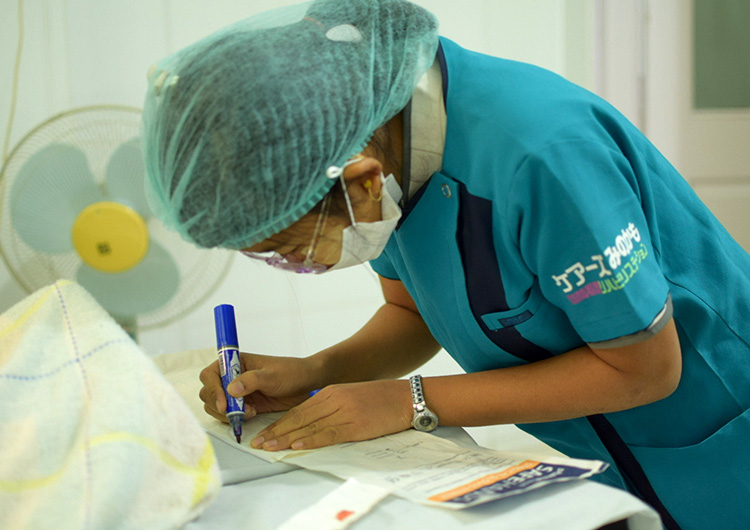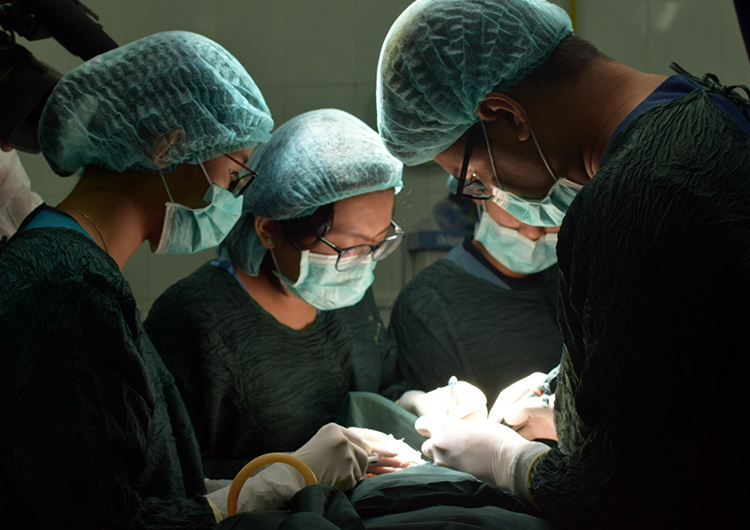This article was written by Ms. Ohashi Michiyo, one of Japan Heart’s Senior Nurses
Mingalaba!
Last time, I told you about surgery preparation, but this time I want to tell you about what happens during surgery.
When the founder of Japan Heart, Dr.Yoshioka, comes to Wachet is when you know the surgery will start. All of the staff members wait to meet him at the entrance of the hospital when he arrives from Mandalay Airport. Everyone is anxious because surgery will begin at last.

When Dr. Yoshioka arrives he says “Otsukare-sama” to everyone, which is Japanese for “Thank you for your work”. The surgery begins as soon as Dr. Yoshioka steps into the operating room.
We bring patients from the ward into the operating room. Myanmarese doctors and nurses who will be part of the surgical teams begin to prepare at this stage.
Most of the local Myanmarese nurses provide direct assistance to the doctors by passing surgical instruments to the operating doctors during surgery. When is see this scene, I am impressed by the precision.

Watchet’s operating room has two rooms where surgery can be performed. During the operation period, we make full use of these two rooms and use them in parallel. We quickly remove the patient who has finished surgery and bring the next patient into the operating room
The difference between surgeries done in Japan and surgeries done in Wachet is that most surgeries in Wachet are done with local anesthesia.
Surgeries that would typically use lumbar or general anesthesia in Japan, are done with the use of local anesthesia in Wachet. The patient is conscious and the operation is performed with only the surgical site being free of pain.
The reason why we do this is that using general anesthesia can lead to changes in the patient’s condition during and after surgery. In addition, the post-operation fasting period takes longer which can increase stress and burden on the patient. To mitigate this, we take steps to reduce the risks on the patient, In addition, because many of the drugs for anesthesia are expensive and hard to come by, we can reduce costs by saving general anesthesia for patients who will really benefit from it.
In saying that, the most important thing we value is patient safety and comfort. When patients undergo surgery with local anesthesia, they are conscious and in the moment when they come into the operating room and the scalpel enters their body, they are often very scared. The role of us nurses is to alleviate this anxiety and fear. I try to be mindful of this and I speak with patients, cover them with towels, and make sure that they don’t get cold.
The staff in the operating room are of course busy, but patients who have completed surgery are constantly being transferred to the wards too. The staff there are busy measuring vital signs, receiving the next day’s hospitalizations, securing IV drips, and general surgical post-treatment.
It makes me think about how important it is for all the staff to cooperate with each other, talk to each other, help each other, and work for the patients.
The number of patients we get per day is more than 20 and the surgeries can run until midnight and into the early morning.
However, all of our staff work together to make sure that our patients can finish surgery safely and that their pain is minimized. I will do my best!

Most surgeries are performed by local Myanmarese doctors. One doctor has been involved with Dr. Yoshioka’s surgeries for a long time and learned from his experience and is now able to do most of it himself.
Dr. Yoshioka’s surgery is really fast, but the Myanmarese doctor’s surgery is comparable with Dr. Yoshioka. We are always trying to keep up with the speed of the surgery!

Dr. Yoshioka will perform surgery on areas with complicated nerves and major, difficult surgeries. Dr. Yoshioka’s surgeries are even more intense. You can see that the atmosphere inside of the surgery room is growing tenser and everyone’s concentration is increasing.
Dr. Yoshioka does a lot of different surgeries, from children to adults. You can feel the depth of knowledge and experience by taking part.
I want as many people as possible to see Dr. Yoshioka’s surgery. If you are a medical practitioner, you may be able to do surgery with Dr. Yoshioka. By all means, please come to Wachet, Cambodia or Laos and experience everything firsthand.
Next time is the final round. I will tell you the situation after the surgical activities are over!
Senior Nurse Michiyo Ohashi

